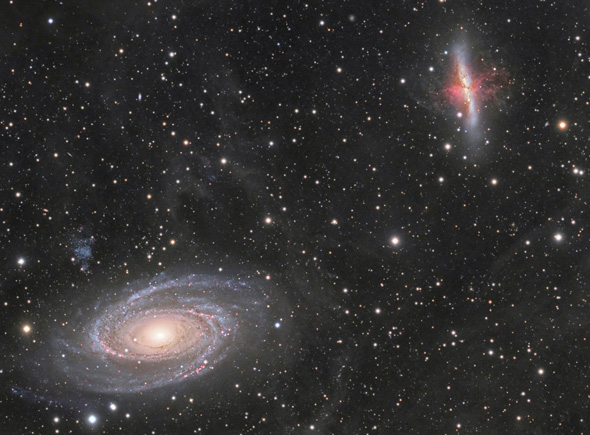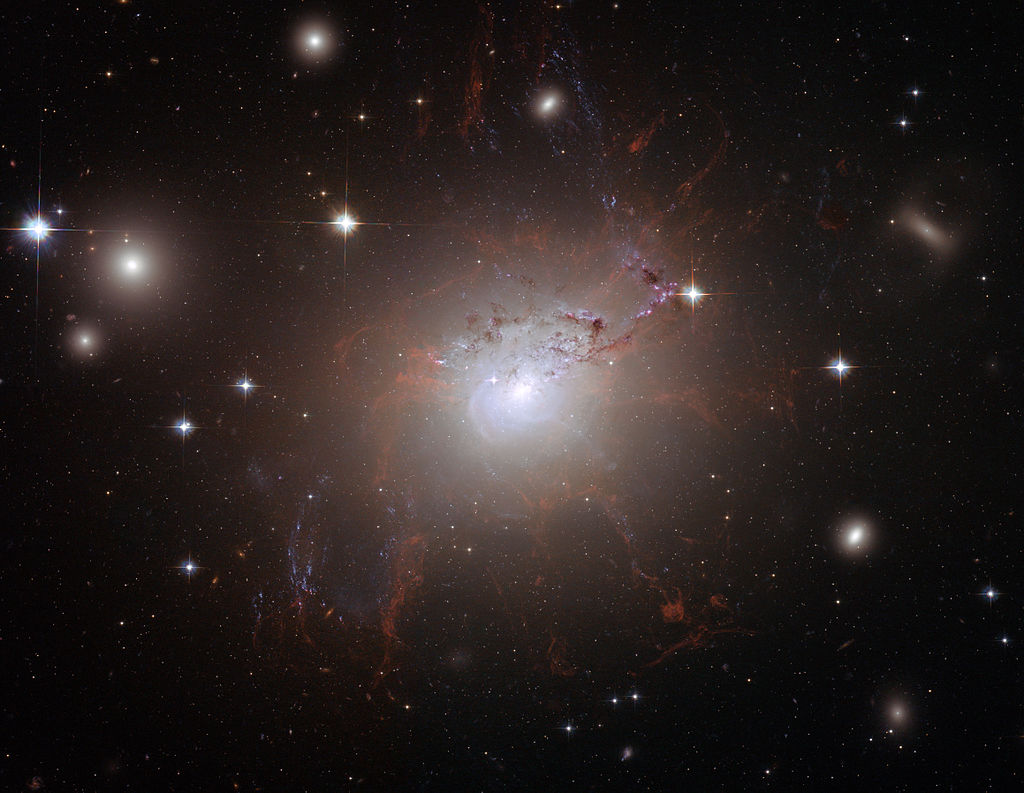MarkBour wrote:
Would it be reasonable to think this intense starburst region is caused by the same overall phenomenon that was discussed here with another recent APOD ... that M82 is a smaller galaxy with a good stock of gas that had not yet been "used", and the larger M81 galaxy's gravitational interaction with it ignited this starburst?
Interesting question, Mark.
As the quote Neufer inserted in his post shows, M82 is believed to have been a low surface brightness galaxy before it started interacting with its larger neighbour, M81. So yes, M82 would have had a lot of unused gas that could be converted into stars.
I would like to add, however, that I think that much of that gas has now been used up and converted into stars, certainly in the disk of M82.
Wikipedia wrote:
Oddly enough, stars in M82's disk seem to have been formed in
a burst 500 million years ago, leaving its disk littered with hundreds of clusters with properties similar to globular clusters (but younger), and
stopped 100 million years ago with
no star formation taking place in this galaxy outside the central starburst and, at low levels since 1 billion years ago, on its halo.
That massive starburst in the disk of M82 that started 500 million years ago and ended 100 million years ago has left the disk of M82 very bright and somewhat (but not very) bluish in color.
Wikipedia wrote:
M82 was previously believed to be an irregular galaxy. In 2005, however, two symmetric spiral arms were discovered in near-infrared (NIR) images of M82. The arms were detected by subtracting an axisymmetric exponential disk from the NIR images. Even though the arms were detected in NIR images, they are bluer than the disk. The arms were previously missed due to M82's
high disk surface brightness
Due to all its recent star formation, M82 is a
very bright galaxy for its size and mass.
Wikipedia wrote:
Messier 82 (also known as NGC 3034, Cigar Galaxy or M82) is a starburst galaxy about 12 million light-years away in the constellation Ursa Major and a member of the M81 Group. It is about
five times more luminous than the whole Milky Way and has
a center one hundred times more luminous than our galaxy's center.
For all its brightness, I believe that M82 is considerably smaller than the Milky Way.
The Casual Sky Observer's Guide wrote:
Although smaller than the Milky Way, M82 is in reality five times as bright.
I see the brightness of M82's disk, coupled with the complete lack of star formation in the disk, as a strong sign that huge amounts of gas has recently been converted into stars in the disk, but that the available gas has now been mostly used up. Alternatively, and perhaps more likely, the available gas in the disk is turbulent and too hot to form stars at present.
There are several examples of galaxies whose disks are devoid of star formation, but star formation can be seen in its center.
Universe Today wrote:
Most galaxies are throughout the universe are happenin’ places, with all sorts of raucous star formation going on. But for a nearby, small spiral galaxy, the star-making party is almost over. In this latest Hubble release, astronomers were surprised to find that star-formation activities in the outer regions of NGC 2976 are fizzling out, and any celebrating is confined to a few die-hard partygoers huddled in the galaxy’s inner region.
I know all about star formation fizzling out in all my outer regions and leaving me with a star forming central migraine, says NGC 4314.
M64, the Blackeye Galaxy, agrees.
Ann
 M82: Galaxy with a Supergalactic Wind
M82: Galaxy with a Supergalactic Wind









